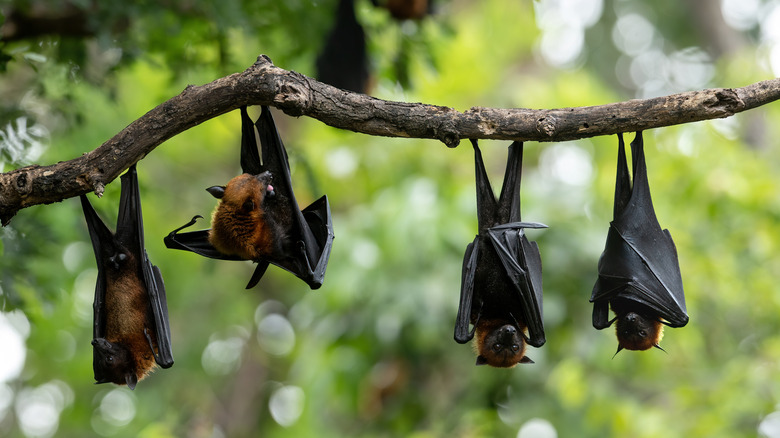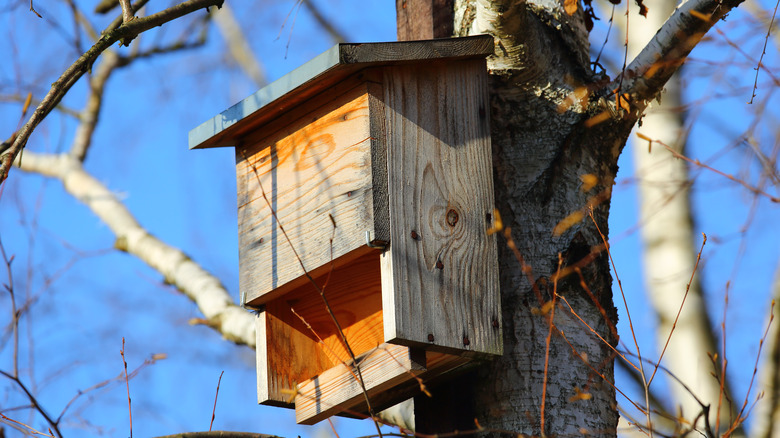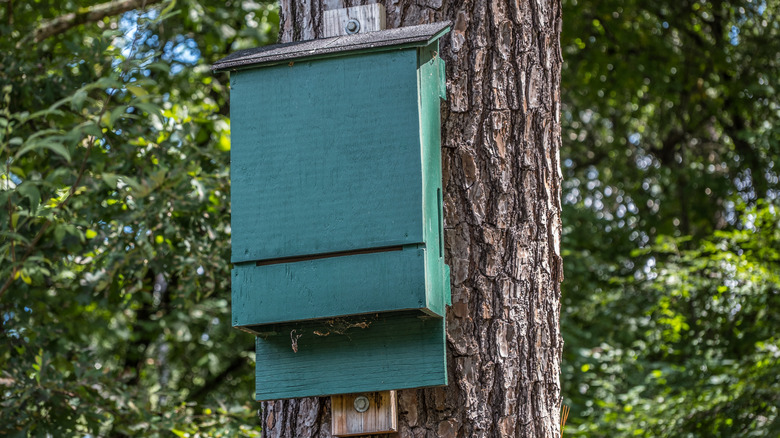Attract More Bats To Your Bat House With These Must-Know Tips
Bats may not be animals we want to see inside our homes, but they add significant value to our outdoor spaces, eating pestering mosquitos and even fertilizing our gardens with their droppings. There is no better way to reap the benefits they bring than providing bat houses for them to nest in. Although bat houses are a step in the right direction to luring the mammals your way, they aren't guaranteed to attract bats to your yard. In addition to providing the house, you must ensure you have provided a good quality shelter in an accessible location, meet the bats' ideal needs, and be willing to keep up with the shelter maintenance.
While outside factors such as where you live and the kind of temperatures you get can impact the influx of bats you see in your area, it will mostly rely on the conditions you set and the bats' access to food, shelter, and water. If your house is near a particularly noisy street, that shouldn't deter the bats much, as they are already used to higher traffic volumes and the sound frequency is low enough not to bother them. Additionally, even if you live in an extremely hot or cold climate, you should still get bats coming and going as long as you properly regulate the temperature inside the bat house. If you take the proper precautions in what bat house you buy or build and meet their ideal needs, you'll have more bats and possibly even pups roosting in your bat houses in no time.
What makes a quality bat house?
Unfortunately, not every bat house you can find in-store or online is of good quality, and not all bats will find it perfect for nesting. Whether you want to build a bat house or purchase one, an important consideration is that it's large enough. Ideally, it should be at least 20-24 inches tall by 16 inches wide. When a bat house is too small, it creates issues with temperature regulation, which won't translate well for attracting bats. The entryway shouldn't exceed an inch wide unless you want to attract larger breeds specifically, and extending all sides of the house by about 4 inches can also help protect them from predators.
The thicker the wood used, the better; at least half an inch thick on the outside walls will be best. The tighter the construction and caulking, the longer the house will hold up. Avoid placing any fabrics and mesh in these shelters, and give them rougher wood landing strips and platforms to help them with their footing. Where the house is placed is just as important as the model. They should be mounted 12 to 15 feet high and tend to attract more bats when they're on buildings rather than trees. A tree might seem more fitting, but it receives less sunlight and exposes bats to more predators. Sunny locations against poles or buildings will keep the environment cozy and encourage bats to rest in your shelters.
Ideal conditions for bats
Alongside creating a quality shelter, implementing ideal living conditions that appeal more directly to bats will increase the numbers in your bat houses. Most importantly, bats want accessible food and water. If you already live less than a mile from a water source, you likely don't need to supplement, but adding a birdbath or fountain for them to utilize wouldn't hurt. Food-wise, bats love a large bug population, so naturally, increasing bug life will draw in bats. Consider adding night-blooming plants to your garden to attract insects bats can feast on. Plants like rosemary, lavender, butterfly bushes, and jessamine are great options.
Access to warmth is essential for these small mammals as they struggle to retain body heat, which is why placing your bat house in a location that receives a good amount of sun is beneficial. A nesting sight will see the best results when it receives six to eight hours of sunlight and reaches summer temperatures between 80 to 100 degrees Fahrenheit. Additionally, painting your box darker will be more appealing since bats prefer darker spaces, but it helps conceal the box from predators, too. Acrylic paint is a good option that won't deter bats. Turning off porch and garden lights can also help with bat presence. Although lights attract bugs, bats keep a distance from lighted areas when possible. Lastly, consider putting away your pets once the sun sets to avoid your dog or cat potentially scaring off approaching bats.


